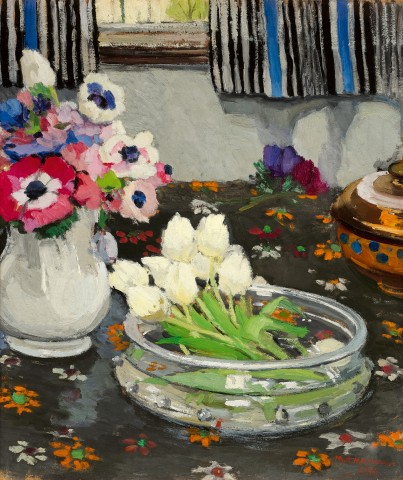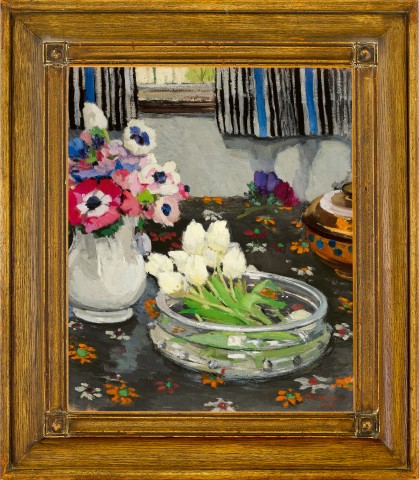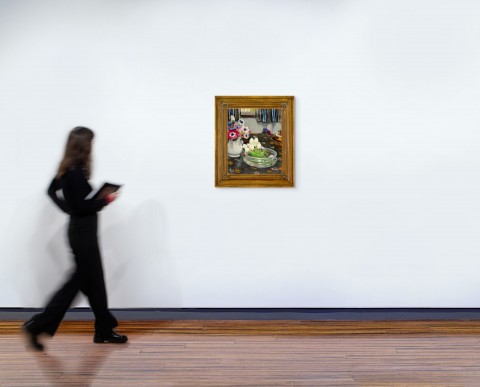ANEMONES, 1916
MARGARET PRESTON
oil on cardboard
55.5 x 46.0 cm
signed and dated lower right: M.R. Macpherson / –1916
unfinished still life verso
artist’s label attached to backing board verso inscribed: – “Anemones” – / by Margaret Preston / Exhibited [ind.] / Royal Academy etc. etc.
inscribed with names and addresses on backing boards
Gladys Reynell, Adelaide
Emily Lucy Walters (née Reynell; sister of Gladys Reynell), Adelaide
Thence by descent
The Rev. and Mrs John Reynell Walters, Adelaide and Sydney
Thence by descent
Walters Family collection, Sydney
Royal Academy of Arts 148th Annual Exhibition, Burlington House, London, 1 May – 7 August 1916, cat. 138 (as ‘The Window’)
Exhibition of Paintings etc. by Misses Margaret R. MacPherson and Gladys Reynell, Preece's Gallery of Australian Art, Adelaide, 15 – 30 September 1919, cat. 3 (as ‘The Window’) (postal labels attached to plywood backing)
The Art of Margaret Preston, Art Gallery of South Australia, Adelaide, 23 May – 22 July 1980, and touring to the National Gallery of Victoria, Melbourne, and Art Gallery of New South Wales, Sydney, cat. O.10 (label attached to frame verso)
‘Personal’, The Journal, Adelaide, 23 June 1916, p. 1
‘“Australia for Artists” – Macpherson - Reynell Exhibition.’, The Journal, Adelaide, 15 September 1919, p. 1
‘”Australia for Artists!” – Macpherson - Reynell Exhibition.’, The Register, Adelaide, 16 September 1919, p. 5
Ure Smith, S., & Gellert, L. (eds), Art in Australia, Margaret Preston Number, 3rd series no.22, Art In Australia Ltd, Sydney, 1 December 1927, pl. 1 (illus.)
Preston, M., ‘From Eggs to Electrolux’, ibid., n.p.
‘Art in Australia’, The Register, Adelaide, 17 December 1927, p. 5
North, I., The Art of Margaret Preston, Art Gallery board of South Australia, Adelaide, 1980, pp. 7, 34 (illus.), 46 (illus.), 77, 85
Edwards, D., Peel, R. and Mimmocchi, D., Margaret Preston, exhibition catalogue, Art Gallery of New South Wales, Sydney, 2005, pp. 41, 48, 51
Margaret Preston Catalogue Raisonné of paintings, monotypes and ceramics, Art Gallery of New South Wales, Sydney, 2005, CD-ROM compiled by Mimmocchi, D., with Edwards, D., and Peel, R. cat. 1916.4
Preston (1).jpg
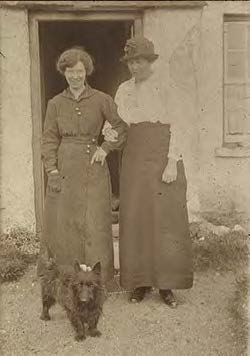
Preston (2).jpg
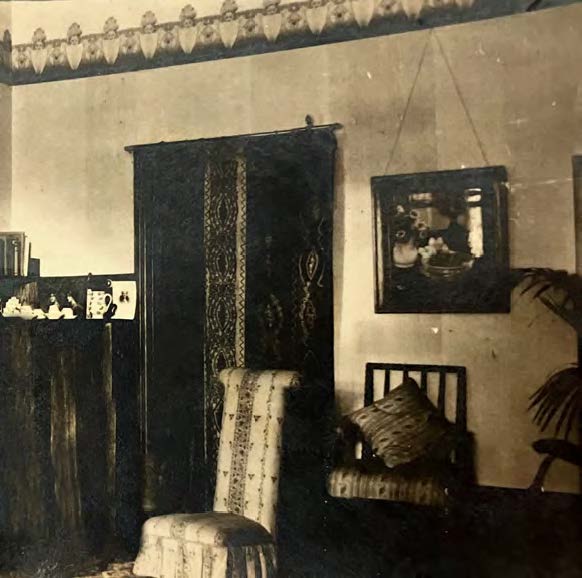
In October 1913, after eighteen months in France, Margaret MacPherson (later known by her married name of Preston) travelled to London in the company of her close friend Gladys Reynell. Before leaving, she wrote to her Australian colleague Norman Carter that ‘I’m very keen to try to show at some of the small shows in London, and having exposed three times in Paris and at a fair number of small shows there, feel I can still send to the Salons and explore other fields.’1 This is a surprisingly understated comment from the otherwise headstrong and forthright Preston, who was already heralded as a ‘splendid painter of surfaces, a beautiful painter of paint’2; and indeed, her works shown previously in the Paris Salons had also been favourably received.3 From the 1920s, Preston became one of the most progressive modernist artists in Australia as she sought to construct a truly national art of this country. Anemones, 1916, however, dates from an equally important, earlier period when the London-based artist rigorously explored Post-Impressionist principles of colour and design, underscored by an active analysis of the shallow space and linear rhythms of Japanese woodblock prints.
Preston (3).jpg
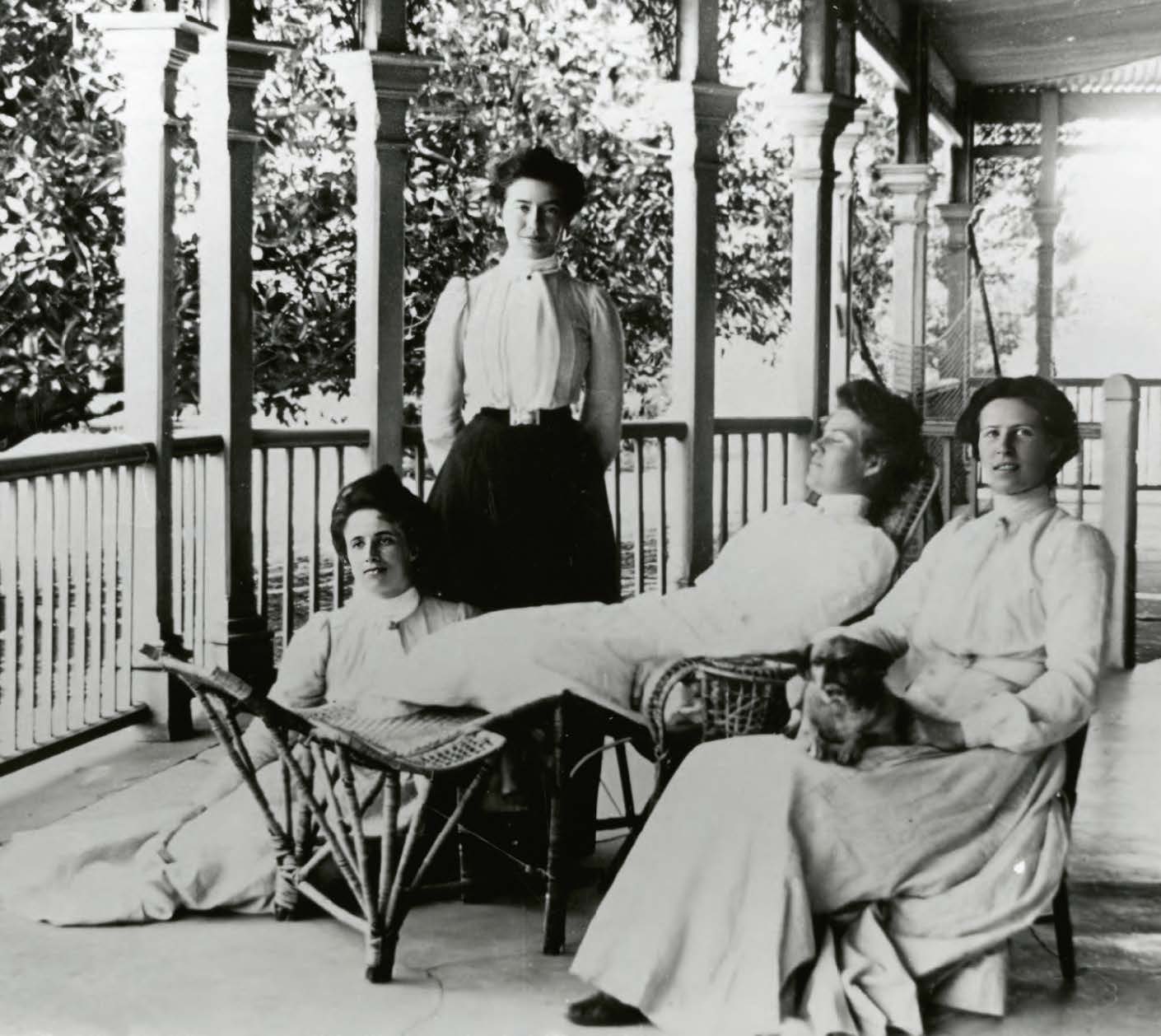
Preston’s talent was evident from an early age. She first studied at the National Art School in Melbourne, before returning to Adelaide and starting a teaching Academy there in 1899. In 1904, with her student and now intimate friend Bessie Davidson, she left for Europe where for a short period, she undertook classes at the Munich Government School for Women. Following this, the friends travelled to Paris where they were befriended by the expatriate painter Rupert Bunny, who stressed the importance of decoration, of ‘decoration without sacrificing truth’ and ‘decorations, pure and simple.’4 Her experiments towards those goals was further informed by visits to the retrospectives of Cézanne and Gauguin. Preston also experienced the infamous 1905 Autumn Salon where she was ‘startled’ by the wild colour and energy of Matisse; indeed, she may have also be seeking out the colour-drenched impressionist work of fellow expatriate John Peter Russell which hung in another gallery at this Salon [‘Cruach en Mahr, (matin)’), lot 11]. These experiences gave Preston a new sense of the subjectivity of vision, alerting her to the liberating possibilities of pure colour and clear design. Returning to Adelaide in 1907, she re-established her studio and school, then left again for London in 1912, this time accompanied by another former student, Gladys Reynell. They only stayed a month before heading to Paris, where Preston reconnected with Bunny and Davidson. She had two paintings accepted for the New Salon, and following the return to London in 1913, Preston showed at the Royal Academy, scoring yet another personal success as ‘she was reported as a ‘colourist’. This let her know definitely the move had been made… From now on she allowed herself full licence in colour – only letting her subjects appear as realistic as her aesthetic feelings allowed.’5 Although they appear gentle to contemporary eyes, the images Preston began painting in the lead-up to Anemones were among the most radical modern works yet created by an Australian artist during those years.
Preston (4).jpg
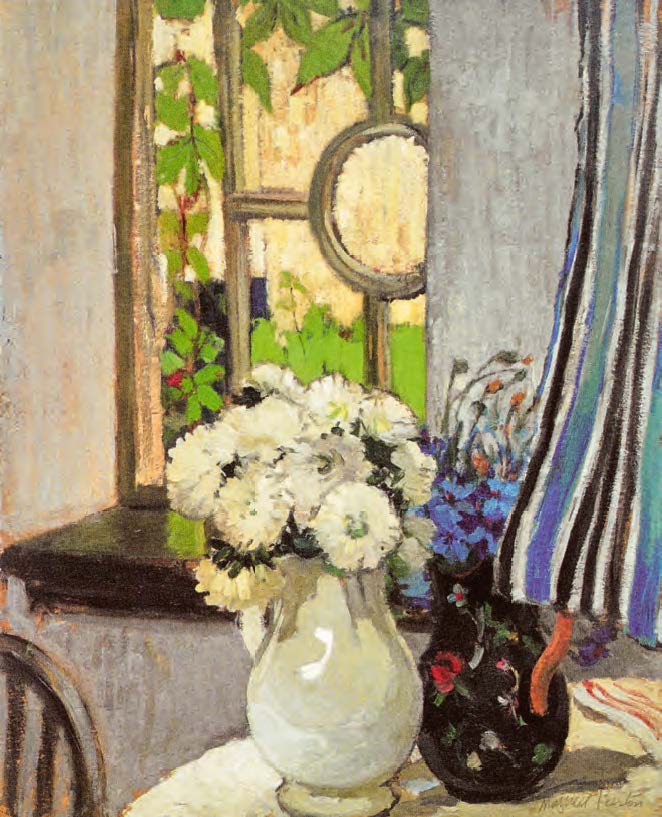
The term ‘decorative’ has often been used dismissively when describing artworks, particularly when discussing the work of women artists. It would also haunt any description of Preston’s imagery during her long career, but for her, it was anything but a negative. Instead, she used the word ‘in the modern sense as an antidote to tonal illusionism to describe its emphasis on a set of aesthetic ‘truths’ closely aligned to forms of post-impressionism.’6 The works created at the studio she shared with Reynell in Battersea, London, chart her dedicated quest to align her abilities with this new vision, stating ‘I am trying all I know to reduce my still-life to decorations and find it fearfully difficult.’7 One pertinent example is Nasturtiums, c.1916 (Art Gallery of New South Wales) which shares the same table-before-window location as Anemones, but is painted in unnatural tones of ochre and brown, highlighted with red. This includes the striped curtains (in spite of the different palette, their distinctive pattern is identical) which hang behind two earthenware jugs sitting on the table and window sill; and whilst these different levels accentuate the illusion of depth, the flat, drier application of paint and tilted aspect equally alludes to flatness. In Anemones, again Preston utilises the still life as a focus (or ‘laboratory table’ in her own description) for these intentions, employing ‘a scale of colour to suit herself… with the combination of realism.’8 There is a freshness and vitality to Anemones’ otherwise formal tableau, again set at a slightly tilted angle and enlivened by the contrast of the striped curtains set against the dark background of the floral table cloth (fabric design was another passion for the artist). To the right sits a covered pot patterned with blue dots which Preston had depicted earlier in Primroses, 1915 (the D R Sheumack Collection) whilst in the centre, a circular glass bowl is filled with white tulips. Technically, she applied the white of the tulips last which brings the background ‘radically forward, allowing her to simulate the flattened spaces of ‘the decorative’’ thus using modernism ‘within the space of naturalism.’9 Anemones, 1916, is an incredibly clear and vibrant painting, cosy but not cluttered, direct but not illusionary.
The centrality of the glass bowl also helps clarify a hitherto unsolved conundrum, namely that Preston exhibited this painting under an alternate title, The window, at the Royal Academy of Arts in London in 1916 (cat. 138) alongside a second work also titled Anemones (cat. 731); and again three years later at Preece’s Gallery in Adelaide. Why she did so is unclear, as another work from 1916 is also titled The window; plausibly it may simply have been to avoid the confusion of having two works titled Anemones at the Royal Academy. The setting for this alternate version of The window, 1916 (private collection) is the same location as the work on offer here, but showcases more of the window’s fretted inner frame. Importantly, it does not feature a glass bowl, the presence of which was very clearly described in reviews from each exhibition, viz (from 1916) ‘For sheer beauty of painting and colour there is nothing by any other woman to equal Miss Margaret R Macpherson’s “The window”. The glass dish, with the flowers particularly, shows a real gift of observation and clear expressive technique.’;10 and from 1919, ‘“The window”, was one of the gems, with the central study of a glass dish and flowers conveying a sense of restfulness.’11 These observations confirm the alternate exhibition title for Anemones, whilst the work exhibited under that title at the Royal Academy (cat. 731) was most likely Anemones, 1915 – 1916 (private collection, formerly Deutscher Fine Art), an opinion backed up by an inscription verso which reads ‘ROYAL ACADEMY / 1916 / 299 / 6...’ This earlier variant has the anemones in a different glass bowl (the tulips are in a ceramic vase at the rear), but the illusion of reflection and transparency of the glass bowl in the work on offer here is far more believable and technically resolved, thus more likely to attract critical acclaim. Additionally, Anemones, 1915 – 1916, is predominantly painted in tones of white, lacking the ‘sheer beauty of… colour’, as quoted above, another key characteristic of this lot, Anemones, 1916.
Preston (5).jpg
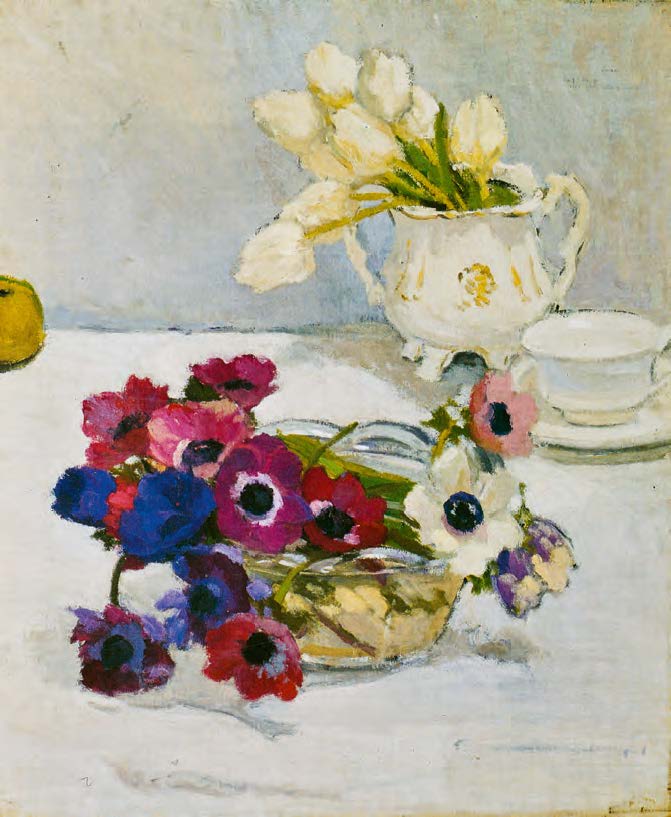
The painting also has a direct connection to Gladys Reynell and was photographed in situ on a wall of the family home ‘Reynella’ in the mid-1920s. It was returned to the artist by Preece’s after MacPherson’s marriage to Bill Preston in late 1919, as the postal label is addressed ‘Mrs W.G. Preston, Glenorie, Musgrave Street, Mosman’ where the couple lived until August 1922. During a research examination for this auction, the backing board was removed which revealed a second sheet of plywood, inscribed in Preston’s hand as being addressed to ‘Miss G. Reynell, Reynella, South Australia’, sent from Musgrave Street. In a curious coincidence, Gladys Reynell married George Osborne also in August 1922 which leads to the strong implication that Anemones was a wedding gift, particularly given its association to their shared Battersea studio. As Reynell’s marriage was not viewed favourably by the family, the newlyweds moved to Ballarat and set up Osrey Pottery, where they worked until 1926 when, due to George becoming ill with lead poisoning, they moved to Curdievale, Victoria. In 1927, when Art and Australia reproduced Anemones in their special ‘Margaret Preston Number’, the painting was listed as belonging to Glady’s sister Emily. Whilst Anemones stayed at Reynella House after the marriage (as indicated by the c.1925 photograph in the Walters family archive), a further supposition here is that Gladys may have sold it to her sister to augment their finances when she and George moved to Victoria.
Anemones, 1916, was a pivotal moment for Preston, name checked as such in her autobiographical article From eggs to Electrolux, published in 1927. Still housed in its original frame and with an impeccable provenance, Anemones is a significant painting from so many angles but above all, it is indeed decorative and full of beautiful paint and splendid surfaces.
1. Margaret MacPherson, correspondence with Norman Carter, 1913, cited in Butel, E., Margaret Preston, Imprint, Sydney, 1985, reprint edition, 1995, p. 14
2. Anonymous, ‘The art of the year’, Lone hand, Sydney, 1 April 1910, p.676, cited in Edwards, D., Peel, R. and Mimmocchi, D., Margaret Preston, Art Gallery of New South Wales, Sydney, 2005, pp.31, 32
3. Preston was in France between April 1912 and October 1913. Whilst there, she exhibited twice at the Société Nationale des Beaux-Arts Salon (New Salon) in 1913 and 1914. In London, Preston exhibited with the New English Art Club yearly from 1913 until 1918; and with the Royal Academy 1914, 1915 and 1916.
Margaret MacPherson, correspondence with Norman Carter, 1913, cited in Butel, op. cit., p. 14
4. Edwards, et al., op. cit., p.41
5. Preston, M., ‘From eggs to Electrolux’, Art and Australia, Margaret Preston Number, 3rd series no. 22, 1 December 1927, n. p.
6. Edwards, et al., op. cit., p. 24
7. Margaret MacPherson, correspondence with Norman Carter, 1913, op. cit.
8. Preston, M., ‘From eggs to Electrolux’, op. cit
9. Edwards, et al., op. cit., p. 48
10. ‘Personal’, The Journal, Adelaide, 23 June 1916, p. 1
11. ‘“Australia for Artists” – Macpherson - Reynell Exhibition.’, The Journal, Adelaide, 15 September 1919, p. 1
ANDREW GAYNOR
